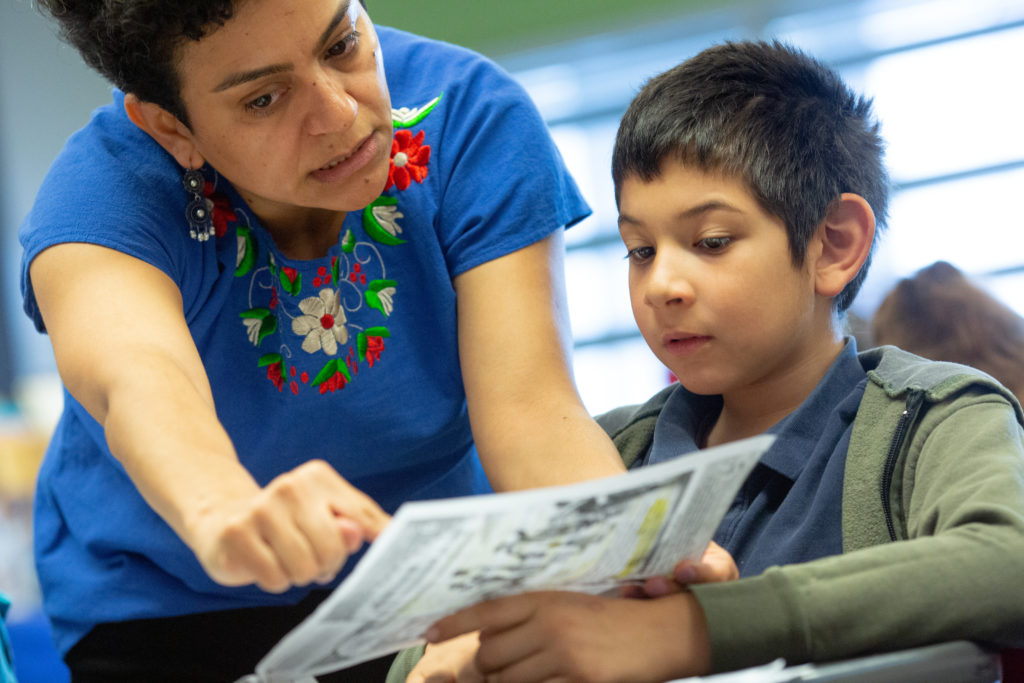Tiered System of Supports: Putting a Student Support Plan into Action

Photo by Allison Shelley for EDUimages
“Schools often fall short in implementation and progress monitoring of supports. Schools often have the right members at the table and have taken the time to develop robust plans, without taking the time to reflect on the effectiveness of those plans and/or provide the support necessary to the individual tasked with implementation.”
 By Dawn Foreman, M. Ed. and Renee Prince, LCSW
By Dawn Foreman, M. Ed. and Renee Prince, LCSW
The final phase of the Tiered System of Supports is the Implementation Phase, which is a critical but often neglected part of the system.
The Implementation Phase focuses on putting into action the student support plan aligned to whole-child design. The three main components within this phase include:
- Actual implementation of the student support plan
- Data collection on the quality of implementation
- Determination of how much progress has been made toward the goals identified on the support plan
Many schools have the right members at the table during Tier 2 and Tier 3 meetings and have taken the time to develop robust plans but do not always take the necessary time to reflect on the effectiveness of those plans and/or provide the support necessary to the individual tasked with implementation. Lack of effort toward examining this aspect of the system does a disservice to students and increases the likelihood of implementing strategies that work against creating a more equitable environment for all students.
Let’s consider some of the benefits of ensuring supports are implemented with fidelity:
- Increases the opportunity to provide support to the educator
- Increases the likelihood plans will be implemented with fidelity
- Leverages and considers student voice by taking note of how students are responding to the plan so it is designed to truly fit their individual needs
- Prevents the risk of not meeting students’ needs until later in the year
How can educators ensure this phase is implemented in equitable ways? Educators should pay attention to how they are supporting the students. For example, is there an opportunity for the teacher to receive support in putting the plan into action? If so, what resources are needed? There should be some clear guidelines for monitoring the impact of support on the student, and a way to document how the student is responding.
The data collected during this phase will provide useful information that will aid in meeting students where they are. It will support examination of any implicit biases that might get in the way of accurately interpreting the data. Time and attention given to this phase can be challenging, given the limited time available and the many competing priorities; however, it is just as important as all the other phases of supporting students through a Tiered System of Supports.
Implementation Phase Tools on the Toolbox
Turnaround for Children offers tools to support in the design and guidance on how to implement and monitor student support plans with quality. These tools support educators with putting their student support plans into action, monitoring progress, and holding a review meeting.
Access the Implementation Phase tools and resources on the Toolbox by creating a free account.

Share This Story